
The Victorian Greens are even more ambitious: they want to reduce emissions 80 per cent by 2030, and be net zero by 2035 or sooner.
Energy
With electricity and gas prices hikes dominating news over the cold winter in eastern Australia, it’s no surprise major parties have made energy a policy frontispiece as voters fret about cost-of-living pressures.
At Labor’s campaign launch in Cranbourne last week, Premier Daniel Andrews talked up his promise to reincarnate the State Electricity Commission (SEC). Based in the Latrobe Valley, this back-to-the-future entity would be majority state-owned and get $1 billion to develop renewable energy projects that would power one-third of the state’s electricity.
“Those big companies [which own Victoria’s energy supply] have leached mega-profits out of pensioners and families, and now they’ve told us they’re leaving,” the premier told the crowd.
Labor believes the SEC pledge is a political winner, with internal polling relayed to The Age by senior party sources not authorised to speak on the record showing three-quarters of voters favoured public ownership, and one-quarter against the idea.
Alison Reeve, the deputy director of the Grattan Institute’s climate and energy program, says the beleaguered national energy market has state energy ministers feeling nervous. Without a co-ordinated national approach to the energy transition, individual jurisdictions are trying to maintain control any way they can. In Victoria, this means reinvigorating a state asset, she says.
And it has a nostalgic pull. “There’s a certain demographic of people who feel bewildered and left behind by the pace of change, and this [reviving the SEC] feels like going back to the good old days.”
With privatisation unpopular in the electorate, resuscitating the SEC reminds voters of Kennett-era politics, says Professor Paul Strangio, a political history expert from Monash University.
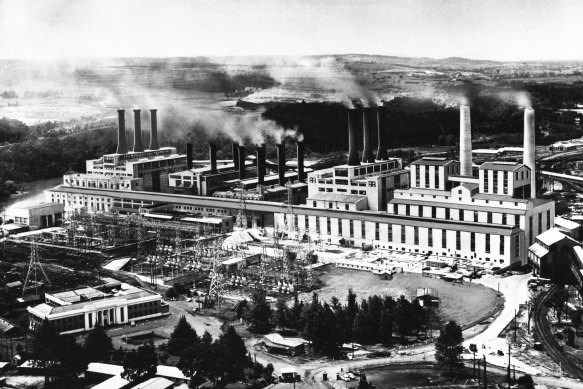
Yallourn Power Station in 1960. Reviving the SEC might have a nostalgic pull, says Alison Reeve.Credit:State Electricity Commission
But the emphasis on it is disproportionate, he says. “What is more important are Labor’s more-ambitious targets around emissions reductions and renewable energy,” he says.
If re-elected, Andrews and Climate and Environment Minister Lily D’Ambrosio have promised to install 100 neighbourhood batteries, build Australia’s first offshore wind farms, create Australia’s biggest energy storage targets and build more batteries, solar and wind farms.
Their announcements have been broadly backed by environmentalists. “This shifts the conversation beyond low-hanging fruit to the challenges of deep decarbonisation – it is a profound development,” says Environment Victoria chief executive Jono La Nauze.
La Nauze says the new emissions reduction target falls short of what is needed to keep global warming under 1.5 degrees (the government disagrees with this), but he still calls it a “nation-leading” development.
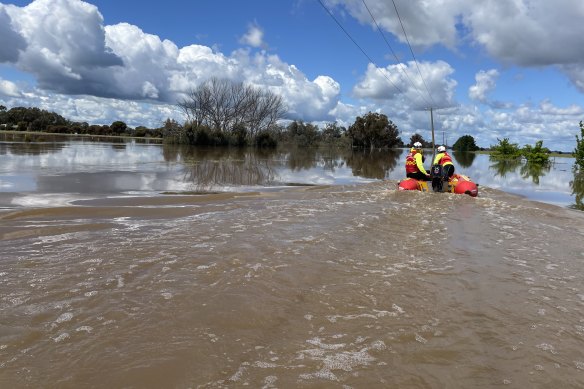
Life Saving Victoria volunteers evacuate people from flooded areas in northern Victoria in October.Credit:Life Saving Victoria
On the same day as Labor’s campaign launch, Opposition Leader Matthew Guy revealed his own policies at the Coalition’s campaign launch in Port Melbourne. And he took a markedly different approach.
Guy vowed to keep all new gas found in Victoria for local household and manufacturing use, telling supporters it was vital the state “turbocharge” gas and “provide reliable, affordable energy”.
Both he and opposition energy spokesman David Southwick pointed to Western Australia’s reservation policy, which sets aside 15 per cent of gas produced in that state for domestic purposes.
Environmentalists decried the prospect of exploiting new fossil fuel resources, but this “turbocharged” soundbite was calculated to appeal to families worried about power bills. Is the proposal technically feasible?
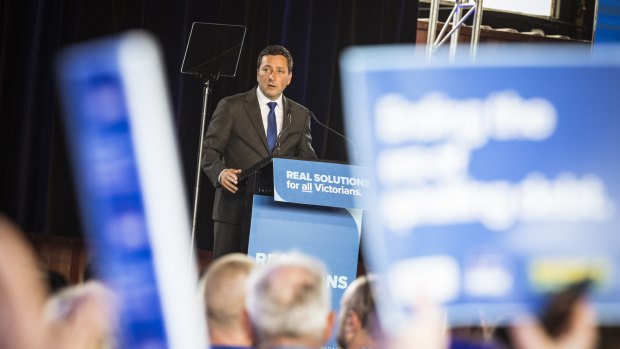
Opposition Leader Matthew Guy addresses supporters at the Coalition’s campaign launch last week.Credit:Chris Hopkins
Section 92 of Australia’s Constitution emphasises the need for free movement of goods between states and territories: its opening statement is “Trade within the Commonwealth to be free”.
In Western Australia, the reservation policy only means 15 per cent of its gas has to be sold into the domestic market, Reeve says. In theory, other states could go west and buy this gas, but the significant transport costs render this unattractive.
“The only reason that gas is reserved for West Australians is there’s a bloody great desert in the middle,” says Reeve.
The Coalition has also promised to offer rebates to 1 million homes to install household batteries. It would also double the rebate for rental properties to encourage landlords to install solar and batteries.
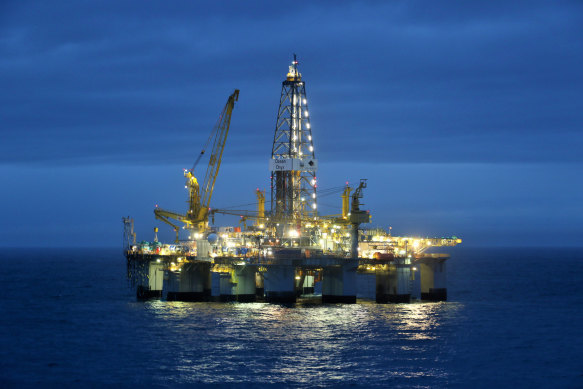
Matthew Guy says Victoria should ‘turbocharge’ its gas production, but environmental groups want more renewables.
La Nauze says these positive announcements by the Coalition were “undermined” by the onshore gas production “thought bubble”. “It is deeply disappointing that [they] have chosen to stoke a culture war on gas in full knowledge their promise will be impossible to implement,” he says.
Victoria, which produces about 17 per cent of the nation’s greenhouse gas emissions, has reduced its emissions by almost one-third since 2005. Despite a lack of a coherent federal approach to the clean energy transition, most analysts The Age interviewed say the Andrews government had made good headway on reducing emissions from electricity generation.
Much more remains to be done. The next government will need to cut emissions in other sectors and keep the lights on as coal plants close. Transport is the second most polluting sector in the state, but has received scant policy attention.
The Victorian Greens’ policies on emissions reduction are the most ambitious, but the question is, as ever, how the minor party can turn its ideas into legislation.
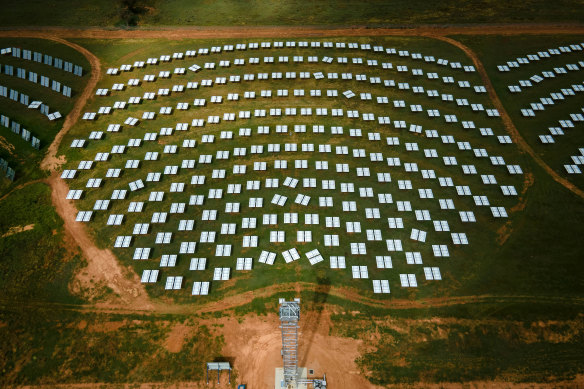
The RayGen Power Plant, near Mildura, a renewable electricity project that will provide reliable, on-demand power.Credit:Eddie Jim
Greens leader Samantha Ratnam believes her party can hold the balance of power in the next parliament, and nominates banning onshore and offshore gas exploration and an immediate end to native forest logging across Victoria in her top five priorities. Ratnam might get her wish, as pollsters say the race has recently tightened in the favour of minor parties.
Climate and integrity are a strong focus of teal independent candidates, but these might not have the same resonance in a state election, says Strangio.
What about nature?
Victoria’s animals and natural landscapes are in a state of serious decline. Population growth, habitat destruction and feral species have put nature under pressure, and the climate crisis has caused extreme disasters such as bushfires. One-third of Victoria’s land-based plants, animals and ecological communities face extinction.
This year, the issue of native forest logging has never been more prominent. Victoria’s Supreme Court recently found state-owned logging agency, VicForests, failed to follow the law and protect endangered possum species. There have also been media reports about the agency logging protected forests and the carbon emissions that logging produces.
The community outcry has Labor rattled. The party has been leafleting inner-city suburbs like Northcote about an end to native logging (though the official closure date of 2030 only features on the back).
The political fallout over native forest logging is a “running sore” for Labor, Strangio says. “All the controversies surrounding continued logging and the behaviour of VicForests might cost them in places like Richmond and Northcote.”
Loading
In contrast, the Liberals’ policy is to extend logging indefinitely. The Greens want it to cease immediately.
Neither major party has made significant announcements on nature that come close to the funding pledges on energy, says Victoria National Parks Association spokesman Matt Ruchel.
“There’s nothing. Nature is again at the bottom of the pile. There’s lots of pressing issues, and we wanted a comprehensive policy.”
With Josh Gordon
*This article only contains a selection of electoral policies. For the full list, please check the campaign pledges from parties and individual candidates.
Get to the heart of what’s happening with climate change and the environment. Our fortnightly Environment newsletter brings you the news, the issues and the solutions. Sign up here.









 Add Category
Add Category